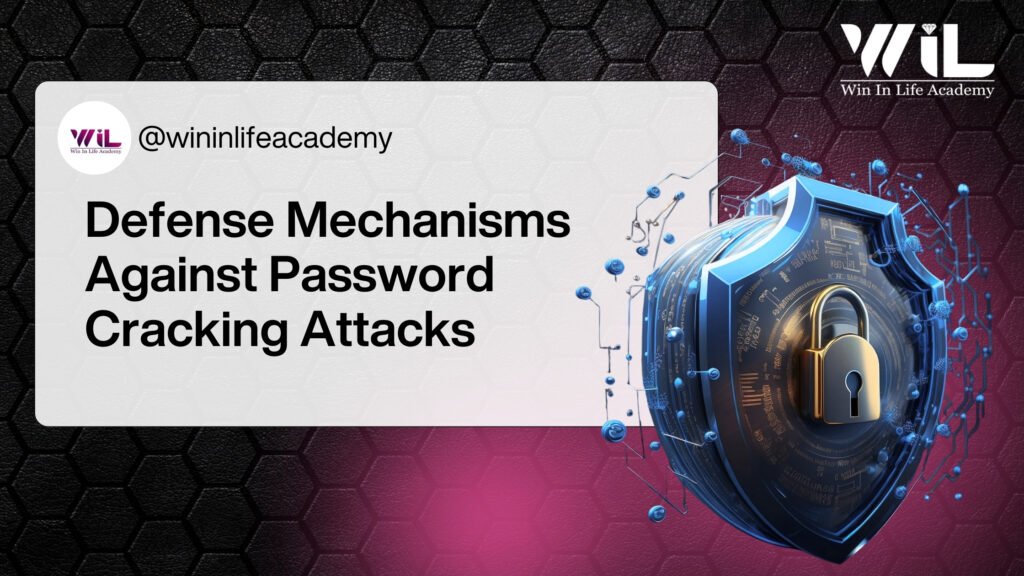In the dynamic realm of cybersecurity, the ability to assess and fortify digital defenses is paramount. Ethical hacking, a disciplined and authorized approach to simulating cyberattacks, plays a crucial role in this process. Among the various techniques employed by ethical hackers, password cracking stands out as a fundamental skill for uncovering vulnerabilities and bolstering system security. Understanding password cracking tools and their effective utilization is not merely an academic exercise; it is a practical necessity for cybersecurity professionals striving to safeguard sensitive information in an increasingly interconnected world.
The essence of password cracking lies in attempting to recover passwords, often stored or transmitted data. While this practice can be exploited by malicious actors for nefarious purposes, ethical hackers leverage these very techniques to identify weaknesses within password security measures. By simulating real-world attack scenarios, they can pinpoint vulnerable systems and guide organizations in implementing robust password policies and security protocols. This proactive approach is indispensable in mitigating the risk of data breaches and unauthorized access.
This comprehensive exploration delves into the world of password cracking tools within the context of ethical hacking. We will dissect the methodologies employed, categorize the diverse range of tools available, and examine their practical applications in security assessments. Furthermore, we will underscore the ethical considerations that govern the use of these powerful instruments and explore the defensive strategies that organizations can adopt to thwart password cracking attempts. Whether you are an aspiring ethical hacker, a seasoned cybersecurity professional, or simply an individual keen on understanding the intricacies of password security, this detailed guide will provide invaluable insights into the art and science of password cracking.
Enroll Now: Ethical Hacking course
Fundamental Techniques in Password Cracking

Before delving into specific tools, it is crucial to grasp the underlying techniques employed in password cracking. Ethical hackers utilize a variety of approaches, each with its own strengths and limitations depending on the password complexity, hashing algorithm, and available resources. Some of the fundamental techniques include:
Brute-Force Attacks: Exhaustive Password Exploration
At its core, a brute-force attack involves systematically trying every possible combination of characters until the correct password is found. This method guarantees success, given enough time and computational power. The complexity of a brute-force attack is directly proportional to the length and character set of the password. For instance, cracking a password consisting of only lowercase letters will take significantly less time than cracking a password with a mix of uppercase letters, lowercase letters, numbers, and special characters. While effective against simple passwords, brute-force attacks can be time-consuming and resource-intensive for complex passwords, often rendering them impractical in real-world scenarios without significant computational resources.
Leveraging Wordlists for Password Recovery
Dictionary attacks employ pre-compiled lists of commonly used words and phrases, along with variations such as adding numbers or special characters, to attempt password recovery. These lists are often derived from leaked password databases or linguistic analysis. Dictionary attacks are significantly faster and more efficient than brute-force attacks against commonly used passwords. However, their effectiveness diminishes passwords that are not present in the dictionary or do not adhere to common patterns. Ethical hackers often customize dictionary lists with information specific to the target, such as organization names, employee names, or project codenames, to enhance the likelihood of success.
Rule-Based Attacks: Intelligent Password Guessing
Rule-based attacks build upon dictionary attacks by applying a set of predefined rules to the words in the dictionary list. These rules can include capitalization, appending numbers, substituting characters, or adding common suffixes and prefixes. This approach allows for a more intelligent and targeted attempt at cracking passwords based on common password creation habits. For example, a rule might be to capitalize the first letter of each word in the dictionary list and append the year “2023”. Rule-based attacks strike a balance between the speed of dictionary attacks and the thoroughness of brute-force attacks, making them a valuable tool in an ethical hacker’s arsenal.
Rainbow Table Attacks: Pre-calculated Hash Lookups
Rainbow tables are pre-computed tables of hashes for all possible passwords up to a certain length and character set. Instead of computing the hash of each password during the cracking process, the tool simply looks up the hash in the rainbow table to find the corresponding password. This technique significantly speeds up the cracking process for certain hashing algorithms. However, rainbow tables can be very large and require significant storage space. Furthermore, they are less effective against password hashes that have been salted, a security measure that adds a random string to each password before hashing, making each hash unique even for identical passwords.
Social Engineering: The Human Element in Password Compromise
While not strictly a technical cracking method, social engineering plays a significant role in password compromise. It involves manipulating individuals into revealing their passwords or other sensitive information. Techniques such as phishing emails, pretexting, and baiting can be employed to trick users into divulging their credentials. Ethical hackers often include social engineering tactics in their assessments to evaluate the human element of an organization’s security posture, highlighting the importance of user awareness training and strong security protocols.
The Ethical Hacker’s Toolkit: Categorizing Password Cracking Tools

A diverse range of password cracking tools are available to ethical hackers; each tailored to specific scenarios and techniques. These tools can be broadly categorized based on their primary function and the methods they employ:
Command-Line Hash Crackers: Powerful and Versatile Tools
Command-line hash crackers offer a high degree of flexibility and control, making them a favorite among experienced ethical hackers. These tools often support a wide range of hashing algorithms and cracking techniques, including brute-force, dictionary, and rule-based attacks. They are typically executed through the command-line interface, allowing for scripting and automation. Popular examples include:
- John the Ripper: A renowned and highly versatile password cracker that supports numerous hash types and cracking modes. It is known for its automatic hash type detection and configurable cracking rules.
- Hashcat: A powerful and fast password cracker that leverages the processing power of GPUs to accelerate the cracking process. It supports a vast array of hashing algorithms and offers various attack modes.
Graphical User Interface (GUI) Password Crackers: User-Friendly Options
GUI-based password crackers provide a more intuitive and user-friendly interface, making them accessible to individuals with less technical expertise. These tools often bundle various cracking techniques into a single application with visual controls and progress indicators. While they might offer less granular control compared to command-line tools, they can be efficient for common password cracking tasks. Examples include:
- Medusa: A modular and parallel brute-force password cracker that supports a wide range of network services, allowing ethical hackers to test the security of various authentication mechanisms.
- Hydra: Another popular parallelized password cracker that supports numerous protocols and services, making it suitable for testing the strength of authentication across different systems.
Online Password Cracking Services: Convenience with Caution
Online password cracking services offer the convenience of submitting password hashes for cracking without requiring local installation of software or significant computational resources. These services typically maintain large databases of pre-computed hashes and employ various cracking techniques. However, ethical hackers must exercise caution when using such services, as there are inherent security risks associated with uploading sensitive information to third-party platforms. It is crucial to thoroughly vet the reputation and security practices of any online service before entrusting it with password hashes.
Specialized Password Cracking Tools: Targeting Specific Formats
Certain password cracking tools are designed to target specific file formats or applications that employ password protection. These tools often incorporate specialized algorithms and techniques tailored to the specific security mechanisms of the target format. Examples include:
- Advanced ZIP Password Recovery: A tool specifically designed to recover passwords for ZIP archives using various cracking methods like brute-force, dictionary, and key search. This falls under the category of zip password cracker.
- Fcrackzip: A command-line tool for cracking password-protected ZIP files using dictionary-based attacks.
Wireless Password Cracking Tools: Testing Wi-Fi Security
With the proliferation of wireless networks, assessing the security of Wi-Fi passwords has become a critical aspect of ethical hacking. Wireless password wifi hack tools are designed to capture and analyze network traffic to attempt to recover Wi-Fi passwords. These tools often exploit vulnerabilities in wireless security protocols like WEP and WPA/WPA2. Popular examples include:
- Aircrack-ng: A comprehensive suite of tools for capturing and analyzing wireless network traffic, including the ability to crack WEP and WPA/WPA2 passwords.
- Reaver: A tool specifically designed to exploit vulnerabilities in the Wi-Fi Protected Setup (WPS) protocol to recover WPA/WPA2 passphrases.
Responsible Use of Password Cracking Tools
The power of password cracking tools necessitates a strong ethical framework for their utilization. Ethical hackers must adhere to strict guidelines to ensure their activities remain within legal and ethical boundaries. Unauthorized access to systems or data, even for the purpose of testing, is illegal and unethical. Therefore, it is paramount for ethical hackers to obtain explicit permission from the system owner before conducting any password cracking attempts.
Furthermore, any information obtained during the password cracking process must be treated with utmost confidentiality and used solely for the purpose of improving the security of the target system. Sharing or exploiting this information for personal gain or malicious purposes is strictly prohibited and constitutes a serious breach of ethics and law. Ethical hackers play a vital role in enhancing cybersecurity, but their effectiveness and credibility hinge on their unwavering commitment to ethical principles and responsible practices.
Defense Mechanisms Against Password Cracking Attacks

Understanding how password cracking tools work is essential for developing effective defense mechanisms. Organizations can significantly reduce their vulnerability to password cracking attacks by implementing a multi-layered security approach that addresses both technical and human factors. Some key defense strategies include:
Implementing Strong Password Policies: The First Line of Defense
Enforcing strong password policies is the cornerstone of password security. This includes mandating passwords of sufficient length (at least 12-14 characters), complexity (a mix of uppercase and lowercase letters, numbers, and special characters), and uniqueness (discouraging the reuse of passwords across different accounts). Regularly rotating passwords and prohibiting the use of easily guessable information like personal details or common dictionary words can further enhance password strength.
Utilizing Password Hashing and Salting: Obfuscating Credentials
Password hashing is a fundamental security measure that transforms passwords into irreversible strings of characters before storing them. Employing strong and modern hashing algorithms like Argon2, bcrypt, or scrypt makes it significantly more difficult for attackers to recover original passwords even if they gain access to the password database. Salting, the practice of adding a unique random string to each password before hashing, further strengthens security by preventing attackers from using pre-computed rainbow tables to crack multiple passwords simultaneously.
Employing Multi-Factor Authentication (MFA): Adding Layers of Security
Multi-factor authentication (MFA) adds an extra layer of security beyond username and password. It requires users to provide an additional verification factor, such as a one-time code generated by an authenticator app, a biometric scan, or a security key, before granting access. MFA significantly reduces the risk of unauthorized access, even if an attacker manages to obtain a user’s password.
Implementing Account Lockout Policies: Limiting Brute-Force Attempts
Implementing account lockout policies can effectively mitigate the risk of brute-force attacks. This involves temporarily disabling an account after a certain number of failed login attempts. This measure makes it significantly harder for attackers to systematically try numerous password combinations.
Monitoring for Suspicious Activity: Early Detection of Attacks
Implementing robust security monitoring systems can help detect suspicious login attempts or unusual account activity that might indicate a password cracking attack. Analyzing login patterns, identifying multiple failed login attempts from the same IP address, and flagging access from unusual geographical locations can provide early warnings of potential breaches.
Educating Users on Password Security Best Practices: The Human Firewall
User awareness training plays a crucial role in bolstering password security. Educating users about the importance of strong passwords, the risks of phishing and social engineering, and how to identify suspicious activity can empower them to become an active part of the organization’s defense strategy. Regular reminders and simulated phishing exercises can reinforce secure password habits.
Final Thoughts
Password cracking tools, when wielded responsibly and ethically, are invaluable assets in the cybersecurity landscape. They empower ethical hackers to proactively identify vulnerabilities, assess the strength of password security measures, and guide organizations in implementing robust defenses against malicious attacks. By understanding the techniques, tools, and ethical considerations associated with password cracking, cybersecurity professionals can effectively contribute to building a more secure digital future.
Ready to take your ethical hacking skills to the next level?
Join Win in Life Academy today and gain hands-on experience with industry-leading password cracking tools and techniques. Our comprehensive ethical hacking course will equip you with the knowledge and practical skills to become a proficient cybersecurity professional. Visit Win in Life Academy to learn more and enroll now!
References
Password Cracking tools
https://nccs.gov.in/public/events/Password-cracking.pdf
Password Cracking 101
https://www.beyondtrust.com/blog/entry/password-cracking-101-attacks-defenses-explained
6 Password Hacker Tools and Protecting Against Them
https://www.okta.com/identity-101/password-hacker
What is password cracking?
https://www.techtarget.com/searchsecurity/definition/password-cracker
Password cracker: 6 tools & strategies for protection
https://www.rippling.com/blog/password-cracker
What is password cracking?
https://www.darktrace.com/cyber-ai-glossary/password-cracking





